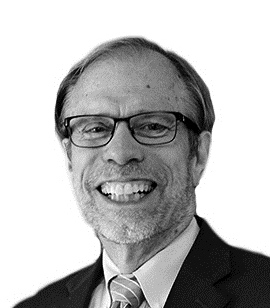One year ago, I left my office for what I thought was a few weeks. Soon I was wearing gloves to the grocery store and sanitizing the groceries when I got home. Spring was a time of fear and high alert.
At times it felt as if the days passed with unbelievable slowness as we all settled down into our bubbles. Thirty million cases and 537,000 dead later, today the 12 months feel like they rocketed by us. Suddenly we have arrived at a point where we are one or two shots away from feeling a little safer for the first time in a year.
At this transition point -- not out of the woods yet but the end in sight -- I have been thinking about the lessons learned and unlearned, the moments savored and the moments when my frustration got the better of me.
In March 2020, my world suddenly shrank. Friends, acquaintances, colleagues, children -- all suddenly out of reach. It felt like the pandemic version of the rapture, with people disappearing from my life in an instant: I couldn't dine with or hug or just spend time indoors with them.
Easter, Fourth of July, Thanksgiving, Christmas: Holidays tumbled by in which any possibility of celebration was preceded by the logistics of COVID-19 testing, masking and social distancing. Dining al fresco was the new normal.
At the same time, much of the noise, the hustle and bustle of daily life, receded. Remember those first weeks, when skies cleared of smog and the cities grew measurably more still? I was struck by how clearly I could hear the bird calls; many I had never paid attention to like the plaintive call of the mourning dove or the ray gun bursts of the cardinal.
I was one of the lucky ones who could still work from home, and the stories of the suddenly unemployed, fearful of eviction, of hunger or worse, pained me. Many charities, panicked at first, were surprised to see that giving was up, but no wonder: We who could give felt so blessed that our reaction was to share with others.
The pandemic was also a postgraduate course in scientific inquiry. Our scientists were learning on the fly, and so was I. Don't wear the N95 masks because hospitals needed them. But wear masks. Wipe down surfaces. But perhaps that was not necessary. Wash your hands. Make your masks tighter and thicker. Avoid gatherings. Unless in Florida.
I wasn't angry at the changing information. It heartened me that people were paying attention, trying to learn the behavior of a stealthy, lethal foe. Viruses may be the only threat mankind faces that could obliterate us (besides the threat we pose to ourselves, of course). Our most intrepid enemy is fiendishly clever and adaptable.
We can't wait to get back to our remembered "normal," but I predict that as we do, there will be moments of nostalgia. I feel it a bit now already: The time spent at home. No commutes. The Zoom cocktail hours with friends and family that we never did before. I prayed more. I exercised more. I waved at neighbors who had been strangers to me, happy to see others who shared my predicament.
In some ways, I had a George Bailey experience. Not COVID-19, but the quarantine was my Clarence, showing me what matters most when I felt I had lost a lot.
I know it's human nature to want to rush back into the hustle and bustle of our old normal, but this rare, unexpected year of loss will be a waste if we don't take the time to learn from what we gained.
- - -
Erlandson, director and editor-in-chief of Catholic News Service, can be reached at [email protected].










